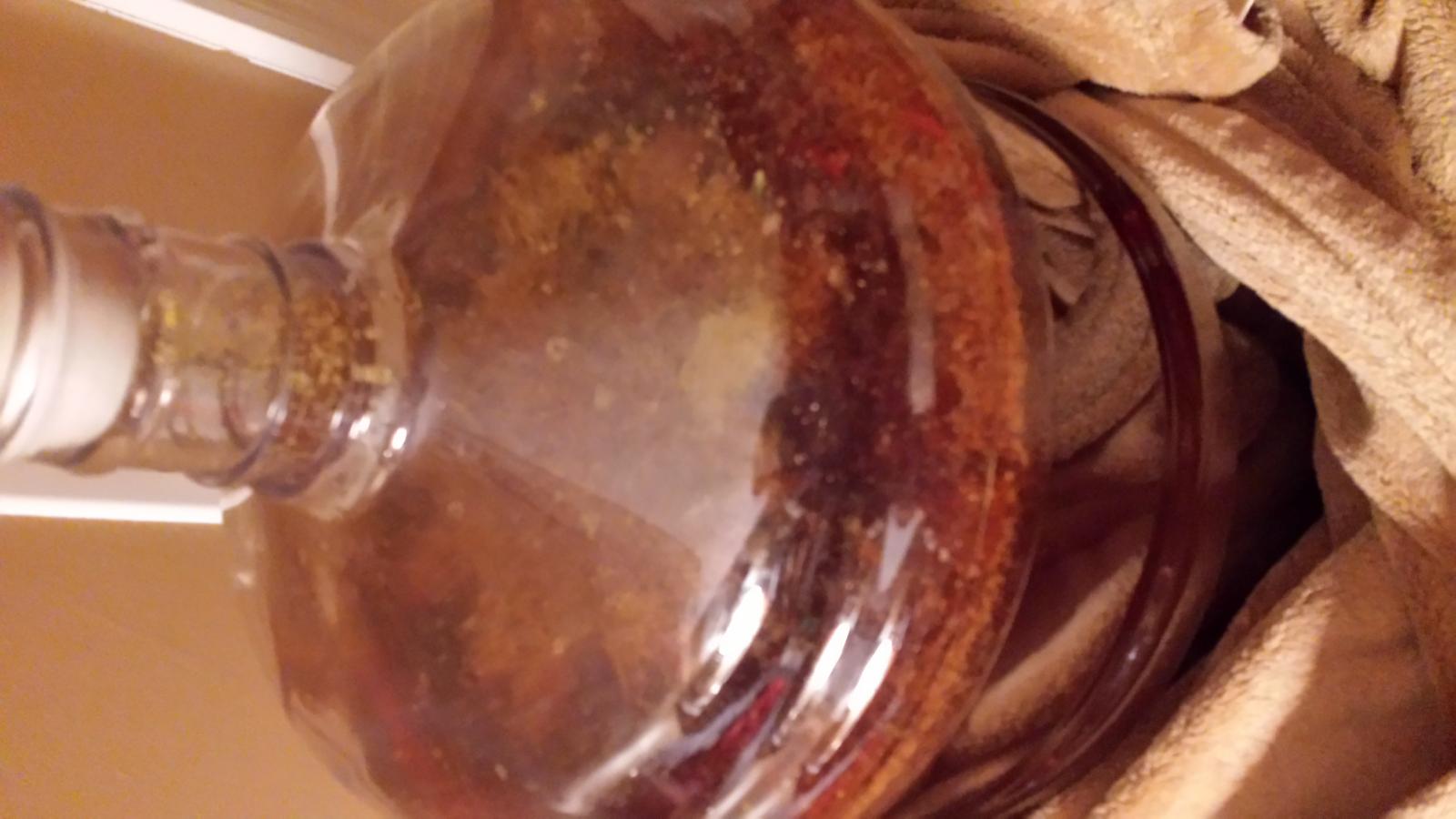Hey all,
This is my second extract brew. I went with Northern Brewer's Dead Ringer, and this time I felt like everything went much smoother than my first time around.
I hit the desired OG at about 1.065, left it in primary for 12 days, measured a FG of about 1.011, then racked to secondary for 7 days before deciding to add the dry hops (1 oz. Centennial ). I did this somewhat early I think, but I thought it would be good to keep an IPA like this young.
So...here's my confusion. 3 days after adding the dry hops, it really looks kinda strange in the fermenter. The hops that haven't sunk to the bottom look dry and crusty, as if I sprinkled breadcrumbs over the top. Some of it is clumping together and turning white-ish. Should I be concerned about infection? Sorry I can't rotate the picture.

This is my second extract brew. I went with Northern Brewer's Dead Ringer, and this time I felt like everything went much smoother than my first time around.
I hit the desired OG at about 1.065, left it in primary for 12 days, measured a FG of about 1.011, then racked to secondary for 7 days before deciding to add the dry hops (1 oz. Centennial ). I did this somewhat early I think, but I thought it would be good to keep an IPA like this young.
So...here's my confusion. 3 days after adding the dry hops, it really looks kinda strange in the fermenter. The hops that haven't sunk to the bottom look dry and crusty, as if I sprinkled breadcrumbs over the top. Some of it is clumping together and turning white-ish. Should I be concerned about infection? Sorry I can't rotate the picture.







































